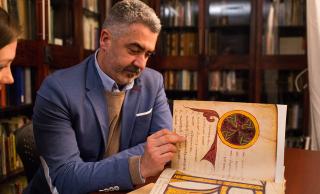New approach to coordinating surveys
This message was sent to executive, deans and other senior academic leaders, academic heads, directors and managers, and senior professional leaders in Vancouver and the Okanagan.
April 26, 2021
UBC often uses surveys to solicit feedback from students, faculty and staff. Results from these surveys are used to inform strategic planning and decision-making. However, the accessibility of digital surveying tools has led to an increase in surveys at the university. Over-surveying our community has led to survey fatigue and lower response rates, which limits the interpretations we can draw from the data.
In response to the increasing number of electronic surveys being conducted in recent years, we have established a Survey Governance Committee that will manage a consistent and coordinated approach to UBC surveys. All surveys intended for broad distribution to the university community will now require approval by the committee before being deployed.
The committee will prioritize surveys that are being conducted for academic research, institutional surveys, and those strongly supporting the strategic priorities of the university. They will also evaluate requests by external agencies to conduct surveys with UBC students, faculty, staff and alumni.
The committee will not review surveys that are course-based, classroom projects, Faculty-specific or those initiated by faculty and staff employee groups. Also, it does not replace the Research Ethics Boards for those surveys requiring ethics review. The purpose of the committee is to:
-
coordinate surveys of the university community;
-
determine avenues for accessing students, faculty, staff and alumni;
-
reduce survey fatigue by managing timing and sampling methods;
-
ensure results are shared with the university as appropriate; and
-
ensure adherence to privacy legislation and data governance.
The committee, which comprises UBC students, faculty, staff and senior administrators, will review surveys intended for broad distribution to the university community. They will help coordinate the timing of surveys to avoid potential conflicts, and will offer additional survey support if needed. Through this centralized and coordinated approach, the committee aims to reduce survey duplication while also helping to increase response rates and improve the quality and use of feedback.
If you are planning a survey, please visit https://pair.ubc.ca/surveys/survey-governance/ to determine whether your survey meets the requirements for review by the committee. The website also includes a calendar of approved university community surveys. Support for surveys not being reviewed by the committee is also available by Planning and Institutional Research (PAIR) (pair.team@ubc.ca).
We would like to thank the Survey Governance Committee for their ongoing oversight of this important work on behalf of the university.
Andrew Szeri
Provost and Vice-President, Academic, UBC Vancouver
Ananya Mukherjee Reed
Provost and Vice-President, Academic, UBC Okanagan
Ainsley Carry
Vice-President, Students
Marcia Buchholz
Vice-President, Human Resources
UBC Bulletin is used to inform and engage leadership at the university. Learn more


